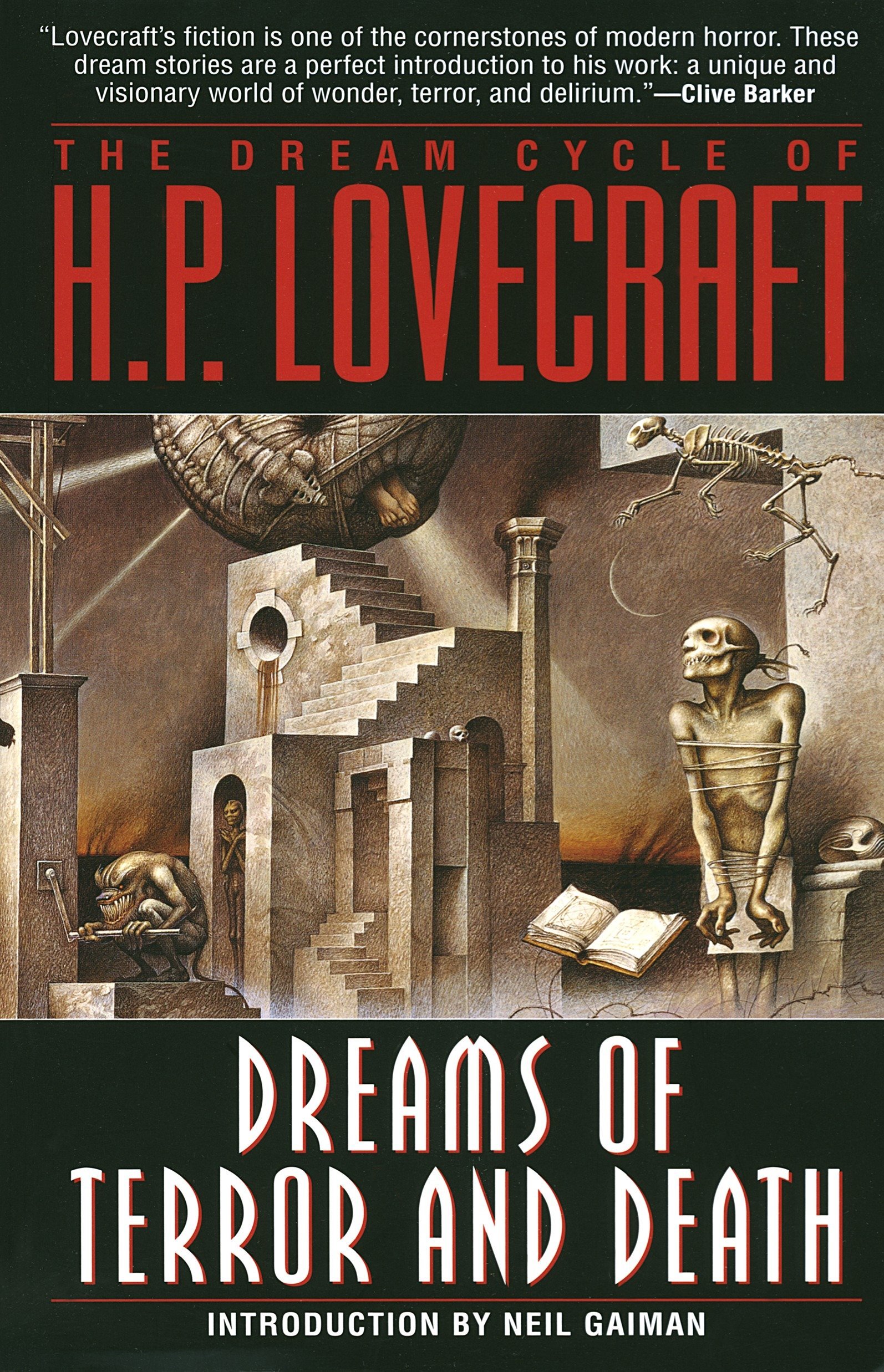If you like Call of Cthulhu, you'll also like...
A selection of Lovecraft-inspired games and movies to cosmically creep you out.

Lovecraft’s influence stretches far and wide, but it doesn't get much more blatant than Cyanide Studio’s adaptation of Call of Cthulhu. For being a minor writer of his time, something about Lovecraft's ability to tap into darkest places of the human psyche continues to resonate today within the horror genre (I definitely felt his influence when I attended StokerCon earlier this year in Providence, Lovecraft’s hometown).
But there’s more to a Lovecraftian story than monsters and tentacles. There’s psychological warfare, occult mysteries, the dividing line between dreams and reality, and an underlying sense that, within the grand scale of the universe, our lives mean nothing. Overall, it emphasizes the cosmic horrors of the unknown, but that unknown can be anything tangible or intangible.
Keeping that in mind, I wanted to draw some special attention to some games, books, and films either written by Lovecraft himself, or inspired by some of the common themes in his stories.
Time Stories: Asylum scenario
Time Stories is a “decksploration” game that uses elements of a tabletop RPG in a narrative board game with a fully-fleshed out campaign. (Mouthful, I know.) You take on the role of temporal agents who travel back in time or into different realities to prevent temporal rifts from forming. By inhabiting the body of an individual, a predesigned character also known as a "receptacle," you can easily blend into your environment and perform the investigative work you need to prevent the time-altering event from occurring. The base game comes with the Asylum scenario, sending players to an insane asylum in Paris during 1921. It has a lot of common elements to Lovecraftian fiction, especially when it comes to the setting, the investigative style, and its approach to psychological horror. There are monsters, both metaphorical and literal.
In this scenario, your receptacle is a patient at the asylum, which automatically makes interacting with orderlies and other patients an interesting challenge. It’s hard to know who to trust. Patients give you important information, but their psychosis makes it difficult to decipher correctly. Doctors and nurses seem trustworthy, but skillfully hide their true intentions. You and your fellow temporal agents may disagree on the best course of action to take.
The combat system is a truncated version of a traditional tabletop RPG. Each character comes with three basic stats: deftness/agility, glibness, and strength/combat. There’s no skill-building, but you’ll use every stat across the course of the game at least once, if you have it to begin with. Some characters have special abilities, like fleeing during combat or using cocaine to get a health point back. Time Stories comes with its own combat dice, or action dice as they're called, so no need to break out the d10s or d20s.
There are several expansions, or additional scenarios, with just as crazy cases to solve, but the Asylum scenario plays so many Lovecraftian mind games with you, it's a must-play.
The biggest gaming news, reviews and hardware deals
Keep up to date with the most important stories and the best deals, as picked by the PC Gamer team.
Eldritch Horror
Inspired by the classic board game Arkham Horror, Eldritch Horror takes the works of Lovecraft and puts you on a quest to save the world from the terrible, Ancient Ones and other monsters—what could be more Lovecraft than that?
Similar to Time Stories, Eldritch Horror is also narrative-driven, with an added twist to combat and encounters. If you fail, instead of simply taking damage or dying, you’ll suffer much more dramatic consequences, and not all of them involve bodily harm. Minor consequences inflict some mental or physical trauma, but more serious ones could involve amnesia, going into massive debt to fund your world-saving adventures, or entering into a dark pact. On top of all that, as you get close to finding an Ancient One, supernatural activity becomes more rapid. Portals to other worlds and gruesome monsters of all varieties appear—the usual kind of fun weekend activities.
One of the best parts of Eldritch Horror is that no two games are alike. A massive card deck (over 300 cards) and three levels of difficulty ensures a different experience each time. Each Ancient One comes with their own dedicated deck of mythos and research cards, which means an entirely different style of play each time.
The Dream Cycle of H. P. Lovecraft: Dreams of Terror and Death

Rather than recommending reading Lovecraft’s “At the Mountains of Madness” or anything in the well-known Cthulhu mythos, this fantastic compilation has all of his Dream Cycle short stories—all 25—in one place, with The Nameless City as the linking story between this collection and his Cthulhu mythos. If you haven’t guessed by now, this entire collection is about dreams.
All the stories in this collection blur that line between dreams and reality, tapping into the effect of lingering emotions after waking from a truly horrific nightmare; Lovecraft based The Nameless City on one particularly nasty dream of his. This short story is also the first time protagonist Abdul Alhazred, author of the fictional Necronomicon, makes an appearance. It’s not confirmed that he is the grimoire’s author until a later Lovecraft story.
The story itself is about an ancient ruin located somewhere in the deserts of the Arabian Peninsula, which was created by an alien, reptilian-like race of creatures that look like a cross between a crocodile and a seal, with a horned forehead and other, demon-like features. Abdul Alhazred dreamed of these ancient ruins, calling it a place “that is not dead which can eternal lie, and with strange aeons even death may die.” This dream compels him to seek out its real location and the creatures within.
The Nameless City is just one example of a story from this collection that twists dreams and nightmares into unexplained premonitions. If you are going to read some of Lovecraft's work, just go in with an awareness that he was a racist and antisemite, and those views certainly influenced the content and themes of his writing.
The Cabin in The Woods
You might be thinking "what’s this doing on this list," but those of you who have seen it might be able to guess why. On the surface, it seems like another stereotypical horror film, but it subverts the standard monster-kills-students trope for something unexpected—something more along the lines of Lovecraft. (Spoilers ahead.)
The literal cabin in the woods is a chamber where underground “researchers” manipulate the students to see how they react to certain stimuli, like sex pheromones and mind-altering drugs. These experiments are a ritual designed to appease several all-powerful and terrifying gods to save humanity. The researchers allude to various rituals taking place throughout the world, but they have all ended in failure. Their last hope is this current crop of young, unsuspecting adults, who turn out to be smarter than the researchers realize. There’s even an entire cell block of caged monsters that the researchers will unleash into the woods when the time is right. It’s similar to Eldritch Horror.
One of the most telling things that director Drew Goddard said about his own film was the comparison he drew between the researchers and the everyday horror audience. In the film, researcher Steve Hadley explains that these ritualistic sacrifices used to be simple thousands of year ago, but the gods grew bored, so they changed the rules to create their own entertainment, hence the complex cabin in the woods experiment chamber. We are the ancient gods, demanding better and better kills for our metaphorical blood sacrifice. Lovecraft’s monsters, as it turns out, are just one way of explaining the horrors of human behavior.
Also, it's really funny.


